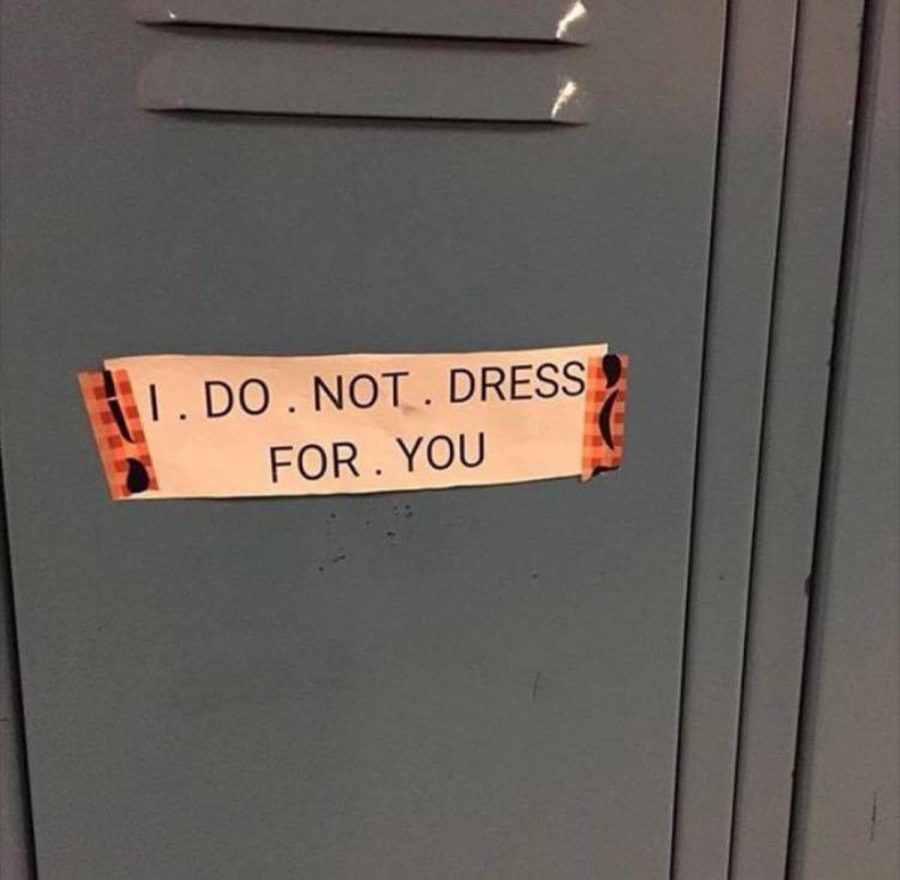In the last five minutes of lunch at Pyle on March 9, assistant principal Scott Gitchell picked up the microphone and started dismissing the students to go to their lockers to put away their lunchboxes and head to class, just like any day. But this Wednesday, Gitchell told all of the girls to remain behind in the cafeteria.
According to multiple students who were there, he proceeded to launch into a speech about the dress code. He said that as the weather got warmer, the female students need to reevaluate their clothing choices. Gitchell said that it appeared that some of the girls had outgrown their clothes from the previous spring and that they should ask their parents to buy them new ones. He added that tank tops and “short shorts” are inappropriate. Students said the tone and manner of the speech implied that the clothes were “distracting,” though Gitchell said he had never used such word. Principal Chris Nardi issued an apology regarding the alleged suggestion.
“I wanted to apologize to the girls for it being implied or stated directly that the way girls dress was a distraction for boys because that’s not what we intended, that should not have been said, and that’s not what we think,” Nardi said.
This interaction left many of the students feeling incredibly uncomfortable, and for good reason. The next day, some taped papers saying “I don’t dress for you” on their lockers or clothes, and eighth graders Alex Pomper and Navya Mohan wrote a letter to the administration protesting the speech.
Many things were wrong with the way this situation was approached by Gitchell. According to the MCPS “A Student’s Guide to Rights and Responsibilities,” students may be asked to change if their clothing is “lewd, vulgar, revealing, or of a sexual nature.” While the administration does have the authority to respectfully enforce this dress code, the overgeneralization that came with addressing such a large crowd, and gender discrimination implied by only addressing girls, sends a message to these girls that their male peers could view their bodies as sexual objects.
Pomper and Mohan’s letter stated that “this lecture entirely avoided the root problem, which is that our school doesn’t teach people to respect others, regardless of clothes.”
As if sending that message wasn’t bad enough, for a male authority figure to deliver it makes the implication even worse. A female administrator, like Pyle Assistant Principal Kim Johnson-Redder, may have been able to more effectively address the girls as someone whom they would be more comfortable and better able to identify with.
Multiple students said that despite not having violated the dress code themselves, they felt a sense of shame and embarrassment, as if they have done something wrong and need to correct themselves. This is exactly what leads to victim blaming in sexual harassment and assault. Slut-shaming makes excuses for male behavior, and wrongfully imposes a double standard upon females.
Additionally, the separation of genders implied that dress code was a non-issue for boys and made some students who are questioning their gender identities feel uncomfortable.
Gitchell said that he would not separate genders again, but felt that he had addressed the girls fairly.
On Thurs., March 10, Principal Chris Nardi apologized to all of the students about Gitchell’s speech. He then spoke separately to the boys about the dress code.
A girl wearing a tank top to school does not and should not read “open season” to boys. Boys should be taught to control themselves and respect girls as their equals. Focusing on creating a community of respect and understanding is more conducive to promoting the best learning environment possible than the effects of a dress code would ever result in.











Voice of reason • Apr 12, 2016 at 6:12 pm
Let’s dispel once and for all this notion that these girls don’t know what they’re doing, they know exactly what they’re doing.
Ever heard of “dress for success”? Are you trying to tell me attention from boys was NOT the goal of the meagerly dressed girl? So doing well in school, working towards a worthwhile degree like engineering, and finding work that makes them productive, meaningful members of society were their intentions all along?
There’s nothing wrong with being a visually and/or physically stimulating and/or pleasing being. Just remember that those oh so annoying adults are trying to help you. You are in a learning environment after all and this is their playground. Try listening to authority when called for, there’s a time and place for everything #GoGetEmGirls!
#GoGetEmGirls!
Anonymous • May 8, 2016 at 11:04 pm
It is not your place to tell a girl why she is wearing the clothes she is wearing. She is wearing what she is comfortable in. If you allow girls to wear what they are comfortable wearing, instead of focusing on this non-issue, they will be able to go out and pursue engineering degrees and productive work and contributions to society as you suggest. So why inhibit them with these rules that don’t even benefit them?
Laptop • Apr 7, 2016 at 1:06 pm
The reality is that girls violate school dress codes much more often than boys do, and even though not every girl dresses inappropriately, there is enough where they had to get all of them together. Not every one drinks and drives, yet we all had to go to the drinking and driving assembly.
Anonymous • Mar 24, 2016 at 4:35 pm
Can you link to the letter?
Anonymous • Mar 23, 2016 at 11:30 pm
“made some students who are questioning their gender identities feel uncomfortable.” How is this even a relevant argument? People have to learn how to not be crybaby’s and live.
Anonymous2 • Apr 4, 2016 at 10:55 am
crybabies*
Anonymous • Mar 23, 2016 at 11:28 pm
The dress code really isn’t an issue for boys. It certainly is for girls though.